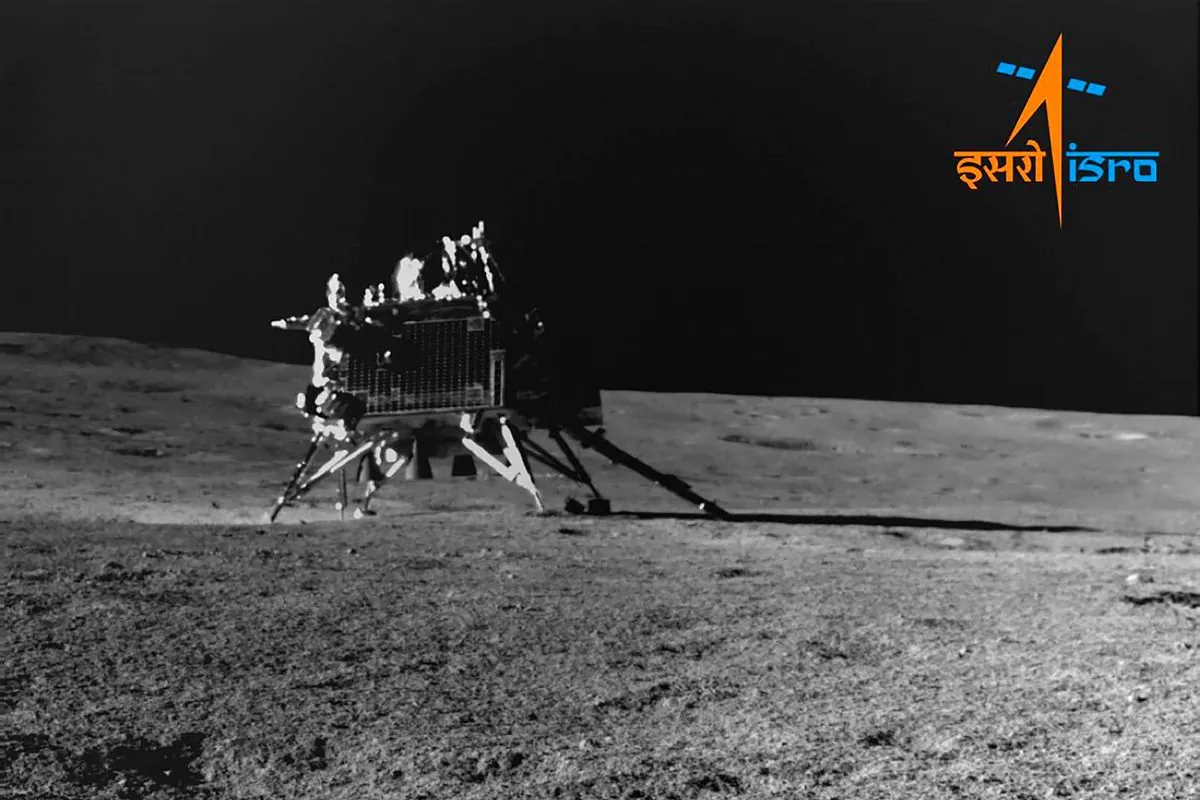India's recent lunar mission has provided compelling evidence supporting a long-standing theory about the moon's formation. The Chandrayaan-3 mission, which landed near the lunar south pole in August 2023, has yielded data consistent with the Lunar Magma Ocean (LMO) hypothesis, a concept that has been central to our understanding of the moon's early history for decades.
The LMO hypothesis suggests that approximately 4.4 billion years ago, the moon was covered in a vast ocean of molten rock. This theory aligns with the idea that the moon formed from debris ejected when a Mars-sized object collided with Earth. The new findings, published in Nature on March 20, 2024, offer fresh support for this concept.
Santosh Vadawale, the lead author of the study and a professor at the Physical Research Laboratory in Ahmedabad, India, explained that the moon would have appeared as a "hot reddish ball" in Earth's sky during its molten phase. This vivid image helps us envision a time when the moon was much closer to Earth, gradually moving away at a rate of about 3.8 cm per year to its current average distance of 384,400 kilometers.
The Pragyan rover, part of the Chandrayaan-3 mission, explored the lunar surface for 10 days, covering over 300 feet of terrain. Using an X-ray spectrometer, it analyzed the composition of the lunar soil, or regolith. The rover's findings revealed a predominance of anorthosite, an igneous rock that aligns with the LMO hypothesis.
According to the LMO theory, as the moon's magma ocean cooled, heavier minerals sank, forming the mantle, while lighter anorthosite floated to the surface, creating the crust. This process explains the moon's current structure, including its partially molten core and its crust composed mainly of oxygen, silicon, aluminum, calcium, and magnesium.
The moon's unique characteristics make it an invaluable subject for scientific study. Unlike Earth, the moon lacks plate tectonics and has no atmosphere or magnetic field. Its surface, pockmarked with over 300,000 craters larger than 1 km in diameter on its near side, serves as a preserved record of the early solar system's history.
Bethany Ehlmann, a planetary scientist at Caltech not involved in the study, emphasized the importance of understanding planetary formation, especially as we discover rocky exoplanets around other stars. The moon's role in stabilizing Earth's axial tilt, which helps maintain our planet's stable climate, further underscores its significance in planetary science.
While the results may not be groundbreaking, they represent a significant achievement for India's space program. The study provides the first in-situ measurements from the lunar polar highlands, complementing previous data from equatorial regions. This comprehensive data set enhances our understanding of the moon's global composition and formation process.
Lindy Elkins-Tanton, a planetary scientist at Arizona State University, noted the value of having "ground truth" measurements, highlighting the importance of mobile explorers like rovers in advancing lunar science.
As we continue to explore the moon, each mission adds to our knowledge of this celestial neighbor. From its extreme surface temperatures ranging from -233°C to 123°C to its synchronous rotation with Earth, the moon continues to fascinate scientists and the public alike. With ongoing research and future missions planned, our understanding of lunar and planetary formation will only deepen, potentially unlocking more secrets about the early solar system and the formation of Earth-like worlds beyond our cosmic backyard.
